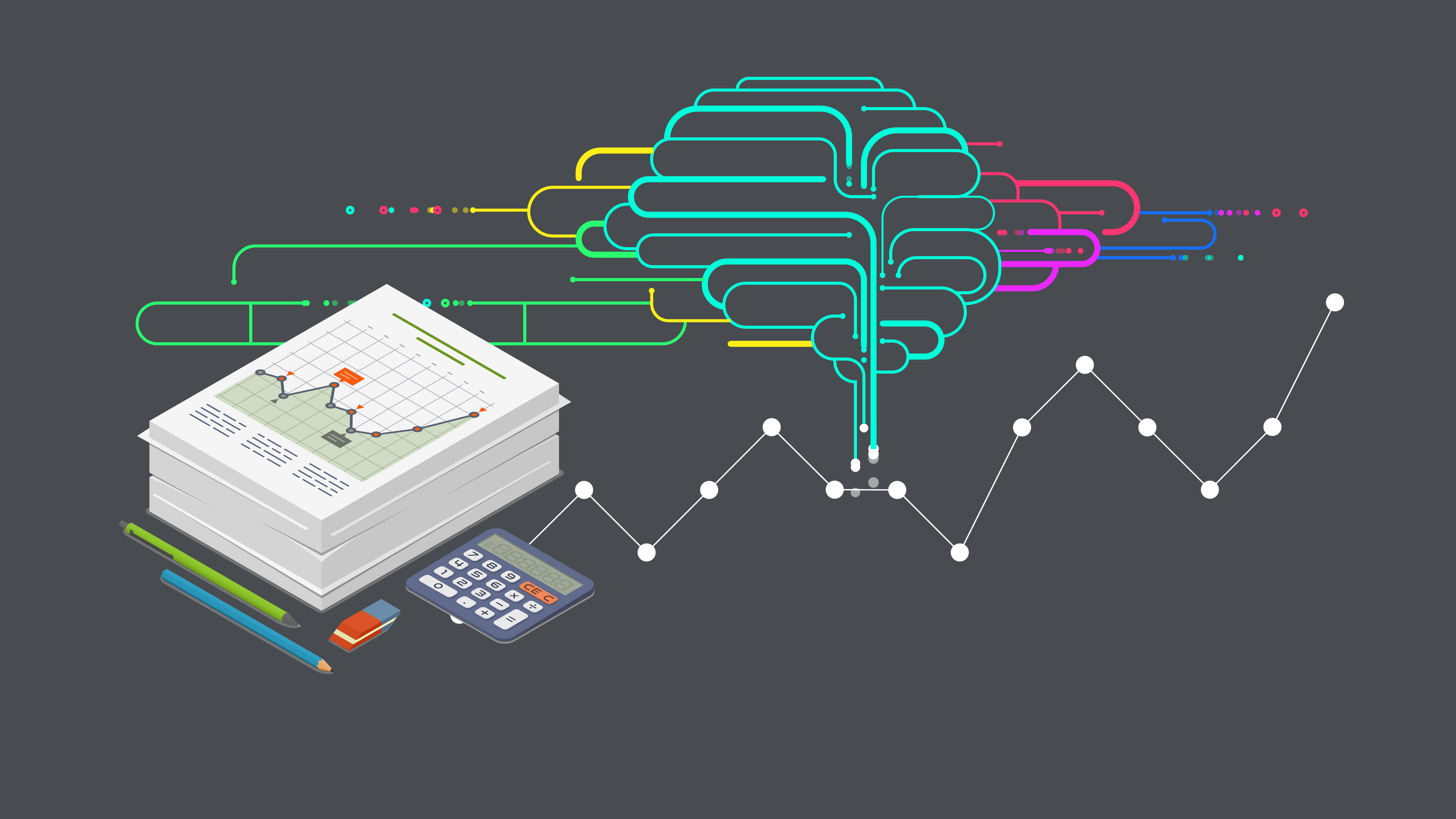
Key takeaways
- The unemployment rate among college graduates has risen, with majors exposed to AI, including computer engineering design and architecture, among those affected.
- In addition, job growth across several white-collar sectors has been tepid, pointing to AI’s growing role in the workforce.
- Certain tech industries, including cloud, web search and computer systems design, stopped growing at the end of 2022, just after the release of ChatGPT.
Generative AI is experiencing rapid uptake across various sectors, with potentially profound impacts on job growth. Indeed, there are signs that the technology is already displacing roles in certain industries.
“An increasingly pertinent debate centers on AI’s impact on employment, especially as more companies are reportedly deploying AI models to augment or displace existing workers, particularly with roles that involve routine and repetitive tasks such as data entry and customer service,” said Brenda Duverce, a senior analyst covering OpenAI on J.P. Morgan’s Private Company Research team.
How is AI reshaping the way we work, and what are the ramifications for the labor market?
“The discussion about AI taking jobs, or at least good jobs, is generally framed as tomorrow’s problem. However, there are some hints that AI may already be taking ‘knowledge worker’ jobs.”

Michael Feroli
Chief U.S. economist, J.P. Morgan
Unemployment among college graduates is increasing
“The discussion about AI taking jobs, or at least good jobs, is generally framed as tomorrow’s problem. However, there are some hints that AI may already be taking ‘knowledge worker’ jobs,” said Michael Feroli, chief U.S. economist at J.P. Morgan.
For starters, the unemployment rate among college graduates has increased, reaching 5.8% in March — the highest in more than four years. “Disturbingly, the unemployment rate has been trending above the aggregate rate, which is highly unusual by historical standards,” noted Murat Tasci, senior U.S. economist at J.P. Morgan. While the trend could be partially due to a secular rise in the relative supply of college graduates and unusually low labor market churn, the effects of AI could also be at play.
To investigate the impact of AI on graduate unemployment, the economics team at J.P. Morgan Global Research examined the cross-sectional distribution of unemployment rates by college major, noting that the technology could affect some fields more than others. Overall, anthropology graduates — who are not particularly exposed to AI — have had most difficulty finding jobs. However, other majors exposed to AI, including computer engineering, graphic design, industrial engineering and architecture, have also experienced significant increases in graduate unemployment, highlighting AI’s impact on job growth.
“To the extent that exposure to AI displaces some workers with specific majors, new entrants from those majors could be at a greater disadvantage, as experience could offset some of the skills that are now obsolete with AI-performed tasks,” Tasci said.
College graduates are facing a tougher job market
Job growth is slowing across certain tech industries
In addition to rising unemployment among college graduates, job growth across several white-collar sectors has been tepid, pointing to AI’s growing role in the workforce.
To this end, the economics team compared changes in employment trends with AI exposure across industries, as well as within detailed subsectors of professional employment, using data from the U.S. Census Bureau’s Business Trends and Outlook Survey (BTOS) and Anthropic AI. On the whole, there is a mildly negative correlation between employment trends and AI usage, suggesting that AI may be depressing job growth.
This trend is especially evident in certain tech industries, including cloud, web search and computer systems design. After years of steady employment gains, these three industries stopped growing at the end of 2022, just after the release of ChatGPT. “While firms may also have been retrenching after their post-COVID hiring, the rise of large language models (LLMs) produced a product that automated some of their labor via code assistance, while at the same time reshaping their business strategy,” Feroli noted.
On the other hand, this trend isn’t as apparent within the professional and business services segment. “The most likely explanation for our non-result across non-tech industries is that AI is simply too recent to have materially changed business practices, even if it were to ultimately prove impactful,” Feroli said. Indeed, BTOS data shows that as of mid-2025, less than 10% of firms in the overall economy indicate they are using AI regularly, with the figure rising to just over 20% in the professional, scientific and technical industries.
“All in all, we find little association between various measures of AI intensity and job growth outside of selected tech industries, and conclude that so far AI has not been a major driver of the composition of employment gains, except perhaps in tech,” Feroli added.
Employment across key tech industries has plateaued
AI could affect the labor market in the next recession
In addition to its impact on job growth, AI could prolong the recovery of the labor market in the event of a downturn. “We think that during the next recession, the speed and breadth of the adoption of AI tools and applications in the workplace might induce a large-scale displacement for occupations that consist of primarily non-routine cognitive tasks,” Tasci said.
Back in the 1980s, middle-skill occupations that rely on routine tasks — such as sales, manufacturing construction and maintenance — started disappearing due to automation. Notably, their decline had a pronounced cyclical behavior. Throughout the downturns over the following decades, it took increasingly longer for these occupations to bounce back from recession-induced job losses, each time resulting in a jobless recovery — an economic situation in which the overall economy improves but payrolls grow only slowly.
Today, AI exposes non-routine cognitive occupations — such as scientists, engineers, designers and lawyers — to similar risks. “As the cost of adaptation comes down with the wide dissemination of AI tools and applications, these traditionally high-wage occupations might come under pressure,” Tasci noted.
This is compounded by the rising unemployment risk among these occupations, which has now surpassed that of workers from non-routine manual jobs. “Workers who were last employed in non-routine cognitive jobs have always accounted for the smallest share of the unemployed, until recently. This changing pattern might be indicative of rising unemployment risk for these workers going forward,” Tasci said.
Taken together, these factors suggest that a jobless recovery could recur in the future. “Overall, a much larger unemployment risk and anemic recovery prospects for workers in non-routine cognitive occupations might cause the next labor market downturn to look pretty dismal,” Tasci added.
Related insights
-

Global Research
Is generative AI a game changer?
February 14, 2024
What are the advantages and disadvantages of generative AI, and where do investment opportunities lie?
-

9:42 - Global Research
August jobs report: "The jobs market continues to soften"
September 05, 2025
-

Global Research
Global Research
Leveraging cutting-edge technology and innovative tools to bring clients industry-leading analysis and investment advice.
This material (Material) is provided for your information only and does not constitute: (i) an offer to sell, a solicitation of an offer to buy, or a recommendation for any investment product or strategy, or (ii) any investment, legal or tax advice. The information contained herein is as of the date and time referenced in the Material and J.P. Morgan does not undertake any obligation to update such information. J.P. Morgan disclaims any responsibility or liability, whether in contract, tort (including, without limitation, negligence), equity or otherwise, for the quality, accuracy or completeness of the information contained in this Material, and for any reliance on, or uses to which, this Material, is put, and you are solely responsible for any use to which you put such information. Without limiting any of the foregoing, to the fullest extent permitted by applicable law, in no event shall J.P. Morgan have any liability for any special, punitive, indirect, or consequential damages (including lost profits or lost opportunity), in connection with the information contained in this Material, even if notified of the possibility of such damages. Any comments or statements made herein do not necessarily reflect those of J.P. Morgan, its subsidiaries or its affiliates.
All materials and information shared with you are, unless otherwise indicated to you, proprietary and confidential to J.P. Morgan. You are hereby notified that any disclosure, dissemination, copying, distribution, or use of the information provided to you, in whole or in part, other than as expressly permitted by J.P. Morgan, is STRICTLY PROHIBITED. You are permitted to disclose the materials and information to your officers and employees on a need to know basis. Should you have any questions regarding this, please contact your usual J.P. Morgan contact. For further information please visit: Sales and Trading Disclaimer.
© 2025 JPMorgan Chase & Co. All rights reserved. J.P. Morgan is a marketing name for businesses of JPMorgan Chase & Co. and its subsidiaries and affiliates worldwide. JPMorgan Chase Bank N.A. (member of FDIC), J.P. Morgan Securities LLC (member of FINRA, NYSE and SIPC), J.P. Morgan Securities plc (member of the London Stock Exchange and authorized by the Prudential Regulation Authority (PRA) and regulated by the Financial Conduct Authority and the PRA) and J.P. Morgan SE (authorised by the BaFin and regulated by the BaFin, the German Central Bank and the European Central Bank) are principal subsidiaries of JPMorgan Chase & Co. For legal entity and regulatory disclosures, visit: www.jpmorgan.com/disclosures. For additional regulatory disclosures, please consult: www.jpmorgan.com/disclosures.